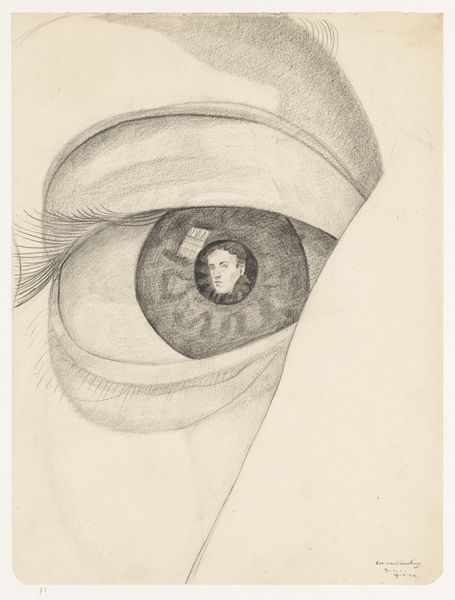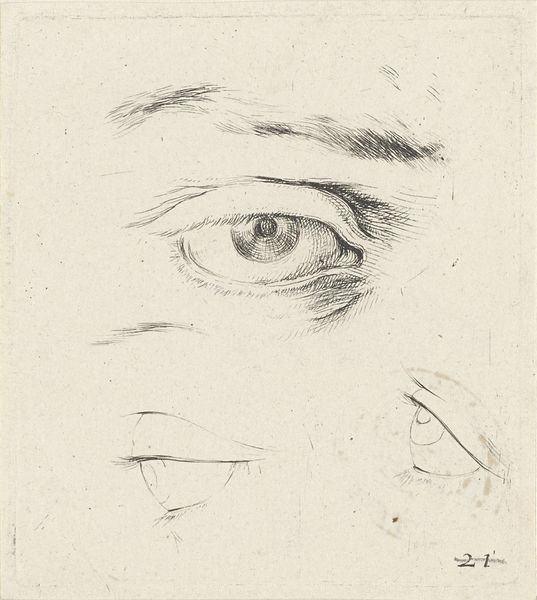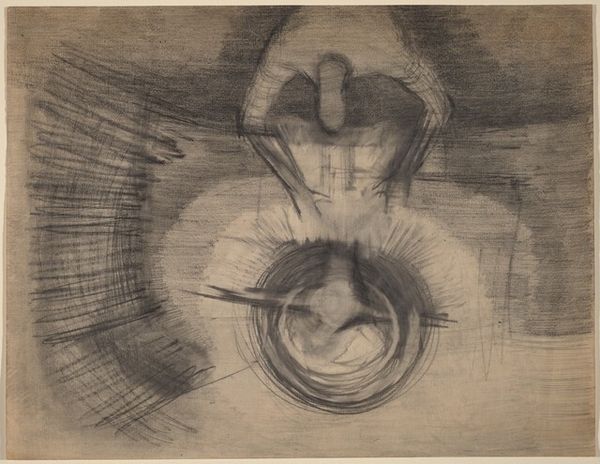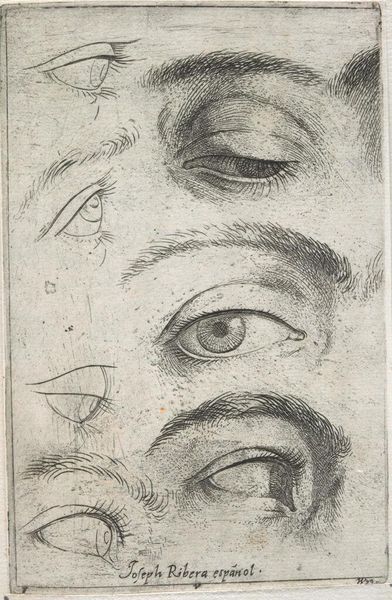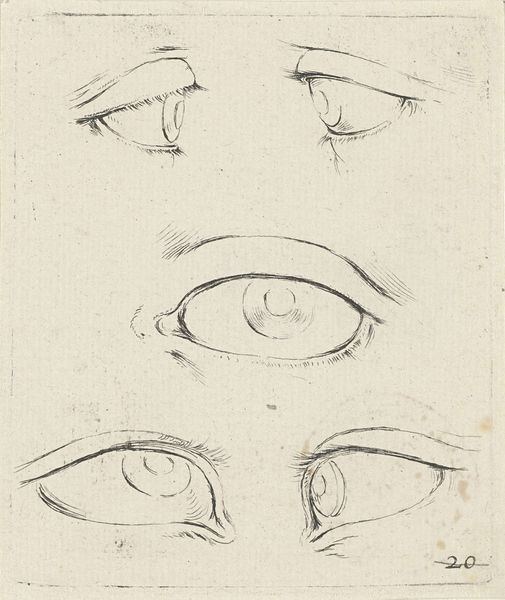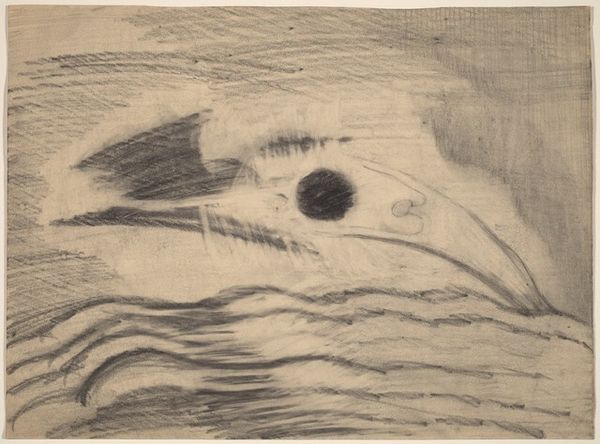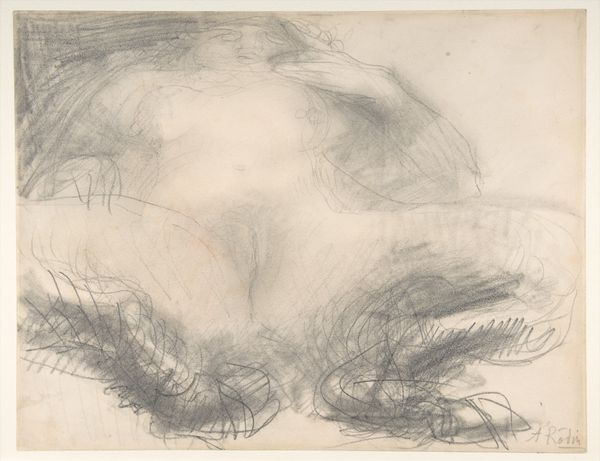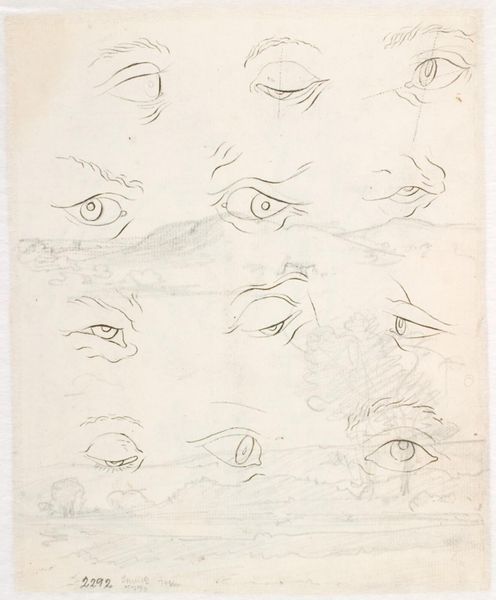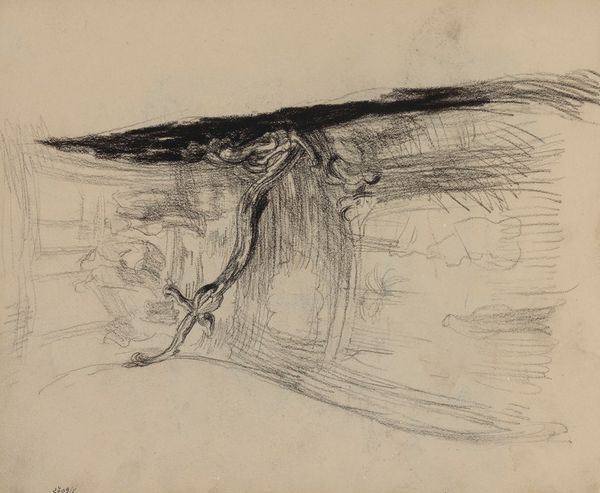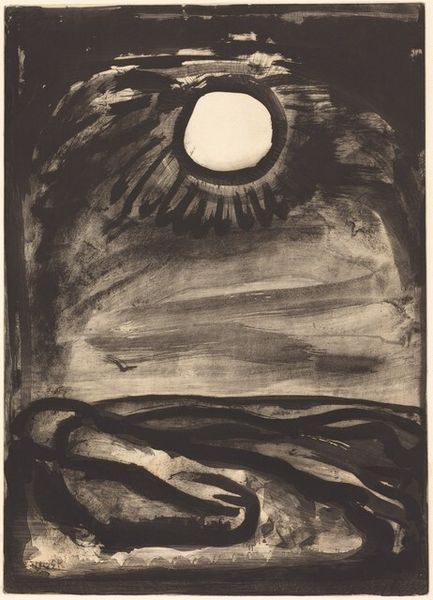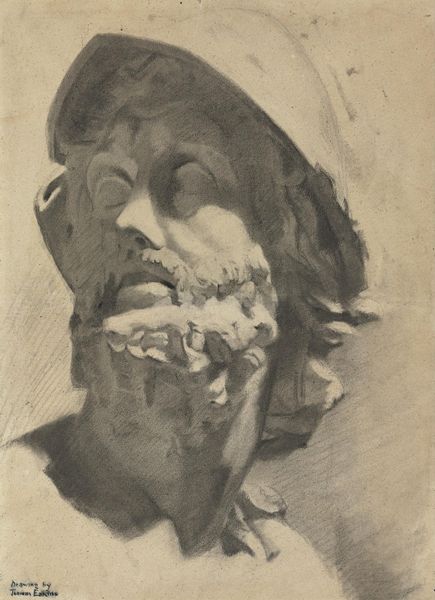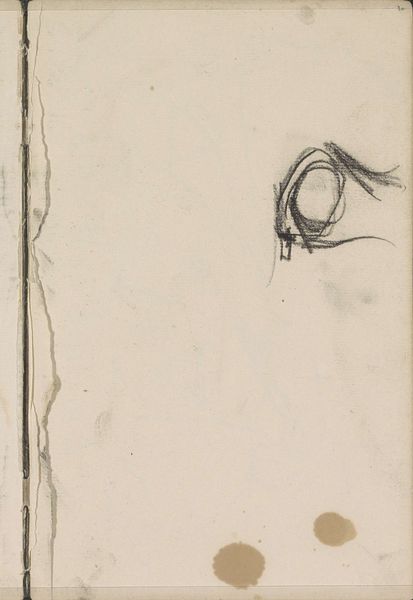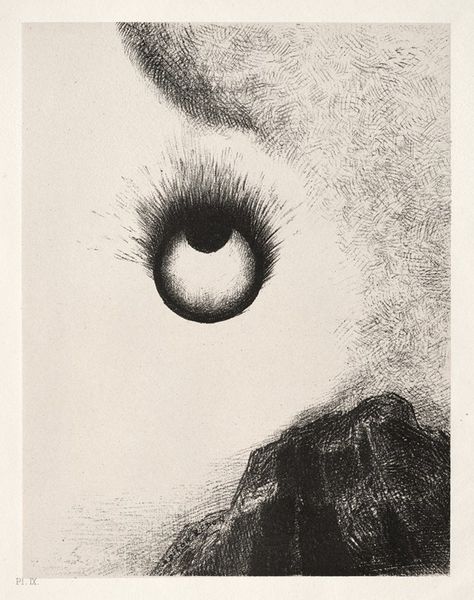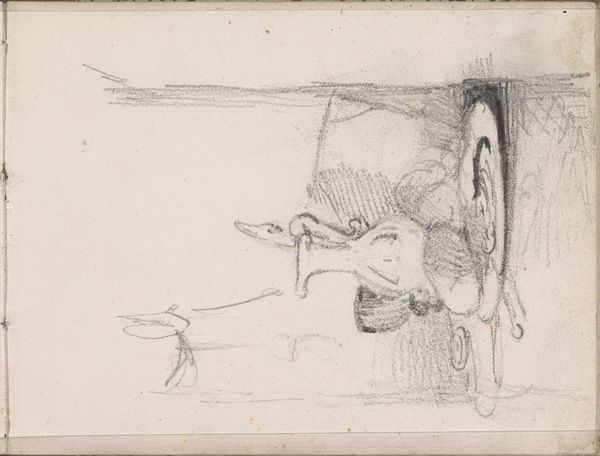
drawing, ink
#
abstract-expressionism
#
drawing
#
charcoal drawing
#
form
#
ink
#
geometric
#
abstraction
Dimensions: overall: 11.4 x 15.2 cm (4 1/2 x 6 in.)
Copyright: National Gallery of Art: CC0 1.0
Curator: This abstract drawing, rendered in ink and charcoal on paper, is titled "Untitled." It was created in 1961 by Eva Hesse. What's catching your eye here? Editor: I keep getting drawn back to those dual oval shapes in the middle, stark against the chaotic web surrounding them. They feel a bit unsettling, like…empty eyes staring back. Curator: I find that reading resonates when we consider the historical context. Hesse’s early work, though abstract, often grapples with the body, trauma, and societal expectations placed upon women. Could these "empty eyes," as you describe them, be interpreted as a commentary on the objectification of the female form? A representation of feeling seen, yet unseen? Editor: Ooh, interesting! It feels raw and immediate, doesn’t it? The energetic, almost frenzied lines shooting out…is that pure Abstract Expressionism? I get the sense she's trying to work through something, visually. It's more than just forms, right? Curator: Exactly. The dynamism evident in the piece gestures to the Abstract Expressionist movement, certainly, with its emphasis on process and emotional expression. But if we position this drawing within the framework of feminist art history, Hesse utilizes this language to subvert traditional notions of femininity and create a space for her own, unique voice. It is equally fascinating to understand the influence of her own biography as a Jewish child refugee. Editor: So it’s not just “look at me, I can drip paint like Pollock.” There's a definite push-pull—something being asserted, but also vulnerability showing through. Even with all the geometric forms. The forms give structure to that raw emotion that seeps from it all. Curator: I'd say that’s spot on. It’s this dialectic—this negotiation between formal abstraction and embodied experience—that makes Hesse’s work so compelling and profoundly influential to artists addressing identity today. Editor: I'm seeing the echoes of that now, especially how contemporary artists build on her language to explore trauma, identity, or simply question... how we even *see* each other. It goes beyond just personal expression, somehow. Curator: Agreed, her approach opened possibilities to use abstraction as a tool of resistance and questioning. It’s also key in understanding Hesse's position in a field often dominated by male voices. Editor: Well, I am happy for this new reading. What started as unsettling is actually revealing the powerful negotiation in being seen and heard. I'm finding layers here I never anticipated. Thanks. Curator: And, hopefully, giving listeners new ways of engaging with the world around them.
Comments
No comments
Be the first to comment and join the conversation on the ultimate creative platform.
